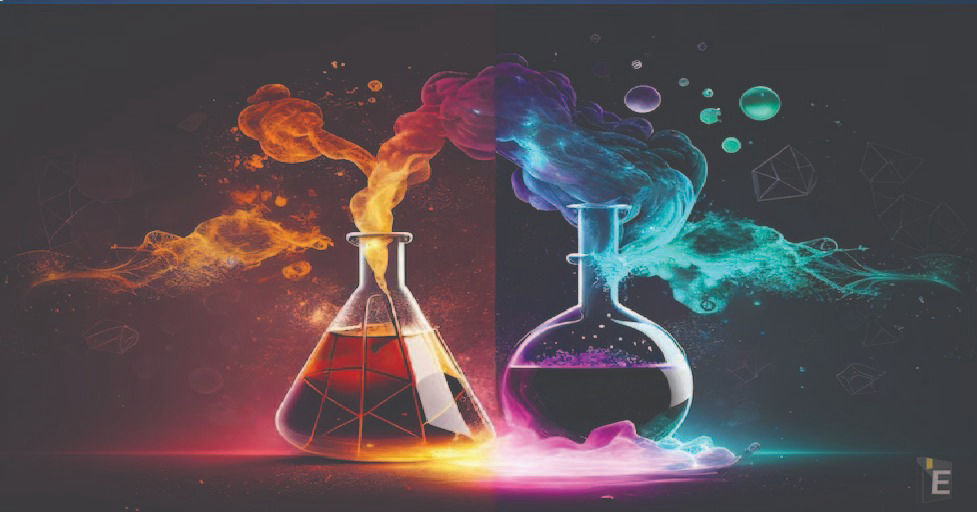Top 100 General Science Questions and Answers

Which tissue helps in wound healing?
(A) nervous tissue
(B) epithelial tissue
(C) muscle tissue
(D) connective tissue
Correct Answer : B
Explanation :
Epithelial tissue plays a crucial role in wound healing. When the skin is wounded, epithelial cells at the edges of the wound multiply and migrate to cover the wound, forming a protective layer. This process is essential for the initial sealing of the wound and is one of the early stages in the overall wound healing process. Epithelial tissue helps in closing the wound and restoring the skin's integrity.
Tibia salt bone is found in?
(A) arm
(B) mouth
(C) leg
(D) Skull
Correct Answer : C
Explanation :
The tibia and fibula are the two bones found in the human leg. The tibia, also known as the shinbone, is the larger and stronger of the two bones and is located on the inner side of the leg. The fibula is the smaller bone and runs parallel to the tibia on the outer side of the leg.
With whom is pace maker related?
(A) lung
(B) Heart
(C) kidney
(D) mind
Correct Answer : B
Explanation :
A pacemaker is a medical device used to regulate the heartbeat in individuals with abnormal heart rhythms (arrhythmias). It is often implanted in the chest to help control the heart's rhythm and treat conditions like bradycardia (slow heart rate) or other rhythm disorders. Pacemakers are typically prescribed by cardiologists, specialized doctors who diagnose and treat heart-related conditions. The decision to implant a pacemaker is made by a healthcare provider based on the patient's specific medical condition and needs.
Which element is present in both cement and bones?
(A) calcium
(B) phosphorus
(C) nitrogen
(D) silicone
Correct Answer : A
Explanation :
Calcium is the element that is present in both cement and bones. In cement, calcium is a key component of calcium silicate compounds, which contribute to the strength and durability of the material. In bones, calcium is a vital mineral that provides structural support and strength. It plays a crucial role in various physiological processes in the human body, including muscle function and nerve signaling.
Which plant has seed but no fruit?
(A) Almond
(B) Sykes
(C) Groundnut
(D) Reed
Correct Answer : B
Explanation :
Certain plants, like gymnosperms, produce seeds but lack fruits. Gymnosperms, including pine trees and cycads, have exposed seeds on cone scales, distinguishing them from angiosperms, which produce seeds enclosed within fruits. The absence of a fruit covering the seed is a characteristic feature of gymnosperms, a group of seed-producing plants.
By whom pollination takes place in fragrant flowers?
(A) Wind
(B) Water
(C) Bird
(D) Insect
Correct Answer : D
Explanation :
Fragrant flowers attract pollinators like bees, butterflies, and birds with their pleasant scent. These pollinators visit the flowers to feed on nectar or collect pollen. During their visits, they unintentionally transfer pollen from one flower to another, facilitating pollination. This process enables the plant to reproduce and produce seeds. Different plants rely on specific pollinators, ensuring their reproductive success and genetic diversity within the ecosystem.
What is the botanical name of mango?
(A) Mango
(B) Daucus carota
(C) Mangifera indica
(D) suitable all
Correct Answer : C
Explanation :
The botanical name of the mango is Mangifera indica. It is a species of flowering plant in the sumac and poison ivy family, Anacardiaceae. Mangoes are widely cultivated for their edible fruit and are native to South Asia but are now grown in many parts of the world.
Litmus is obtained from-
(A) from bacteria
(B) from algae
(C) from fungus
(D) from lichen
Correct Answer : D
Explanation :
Litmus is obtained from lichens, which are composite organisms formed from a symbiotic relationship between a fungus and an alga or cyanobacterium. Litmus is a water-soluble mixture of different dyes extracted from lichens, primarily Roccella tinctoria and Roccella fuciformis. It is commonly used as a pH indicator in laboratories to test the acidity or alkalinity of solutions.
Where does protein synthesis take place in the cell?
(A) Golgi body
(B) Centrosome
(C) ribosome
(D) None of these
Correct Answer : C
Explanation :
Protein synthesis takes place in the cell on ribosomes. Ribosomes are cellular structures composed of RNA and proteins, and they are the sites where amino acids are linked together to form proteins, following the instructions encoded in messenger RNA (mRNA) molecules. This process, called translation, is a fundamental cellular mechanism essential for the synthesis of various proteins necessary for the functioning of the cell and the organism as a whole. Ribosomes can be found both in the cytoplasm of the cell and attached to the endoplasmic reticulum in eukaryotic cells.
Mitochondria are absent in?
(A) green algae
(B) bacteria
(C) fungus
(D) yeast
Correct Answer : B
Explanation :
Bacteria are prokaryotes. They are single-celled organisms and microscopic. It does not have well defined nucleus and cell organelles. Thus, mitochondria is absent in them.



